The Trainers Table: Assess, Don't Guess
“Assess, Don’t Guess”
Whether you are an athlete looking to get stronger in the off-season or an adult looking to get back into a training regimen, you should have a strength coach perform an assessment. The assessment process should include, but not be limited to: a medical history, movement assessment, ranges of motion assessment, and performance evaluation.
A medical history gives the strength coach a better understanding of the client’s general lifestyle and physical readiness for activity. Gathering this information is essential to gaining an understanding of the client’s physical condition. This medical history should review, but not be limited to, occupation, mental stress, past injuries, past surgeries, chronic conditions, and medications. It is essential that this critical information is not overlooked.
The movement and range of motion assessments should give the strength coach a better understanding of tissues that need to be inhibited, lengthened, activated and strengthened. Any muscle imbalances and movement deficiencies found should be addressed to restore proper function and decrease the risk of injury.
Once this movement and range of motion assessment is performed there are many techniques that can be used to correct dysfunctions. These techniques should make you move and feel better while achieving your own goals.
One technique is the Inhibitory Technique. This is used to release tension or decrease activity of overactive neuromyofascial tissues in the body and can be accomplished through the use of a foam roller, lacrosse ball or golf ball.
Another technique is the Lengthening Technique. This can be used to increase the extensibility, length and range of motion of neuromyofascial tissue in the body, which can be accomplished by static or neuromuscular stretching.
Activation Techniques are used to reeducate or increase activation of underactive or dormant tissues. One is looking to recruit as many muscles as possible. Isolated strengthening and isometric holds can accomplish this.
Finally, Integration Techniques are used to retrain the collective synergistic function of all the muscles through functionally progressive movements and dynamic movements.
Athletes should also participate in a performance evaluation. For the athlete, it is a chance to show their specific skills as well as identify baseline measurements that can be used to pinpoint any area that needs to be improved upon. The components being evaluated are speed, strength, power, agility, and endurance. The data received during the performance evaluation can be used to help each athlete set precise goals during his or her training.
A strength coach should set up some short and long-term goals with the client. The short-term goals should be attainable and accomplished within a few weeks or less. The long-term goals should be accomplished within 6 months or more.
A strength coach’s primary responsibility is to implement a safe, well-designed strength-training regimen. He or she should be able to regress and progress exercises to meet the client’s specific needs. To do so requires a comprehensive understanding of the client’s medical history as well as any limitations and goals. A well-designed strength-training program is only as good as the assessment process.
Athletic Performance Training, Inc., utilizes a comprehensive training philosophy, which follows a movement-based approach to improving athletic development. We specialize in athletic training, youth training, adult fitness, semi private training, and personal training. At APT you will prepare to succeed. To learn more about Athletic Performance Training contact Pete at 781-883-5564 or www.aptrainingsystems.com

